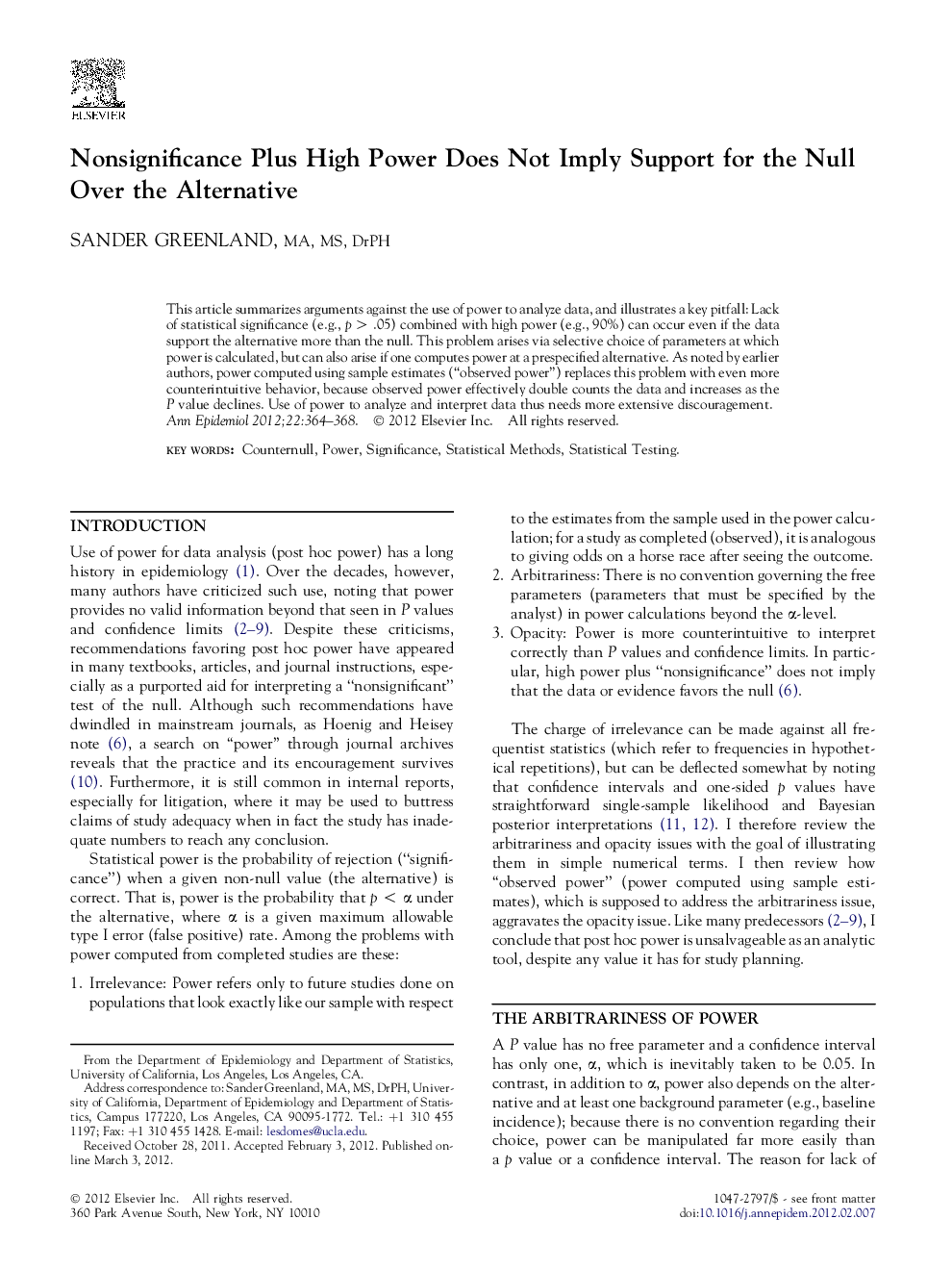| کد مقاله | کد نشریه | سال انتشار | مقاله انگلیسی | نسخه تمام متن |
|---|---|---|---|---|
| 3444269 | 1595279 | 2012 | 5 صفحه PDF | دانلود رایگان |

This article summarizes arguments against the use of power to analyze data, and illustrates a key pitfall: Lack of statistical significance (e.g., p > .05) combined with high power (e.g., 90%) can occur even if the data support the alternative more than the null. This problem arises via selective choice of parameters at which power is calculated, but can also arise if one computes power at a prespecified alternative. As noted by earlier authors, power computed using sample estimates (“observed power”) replaces this problem with even more counterintuitive behavior, because observed power effectively double counts the data and increases as the P value declines. Use of power to analyze and interpret data thus needs more extensive discouragement.
Journal: Annals of Epidemiology - Volume 22, Issue 5, May 2012, Pages 364–368